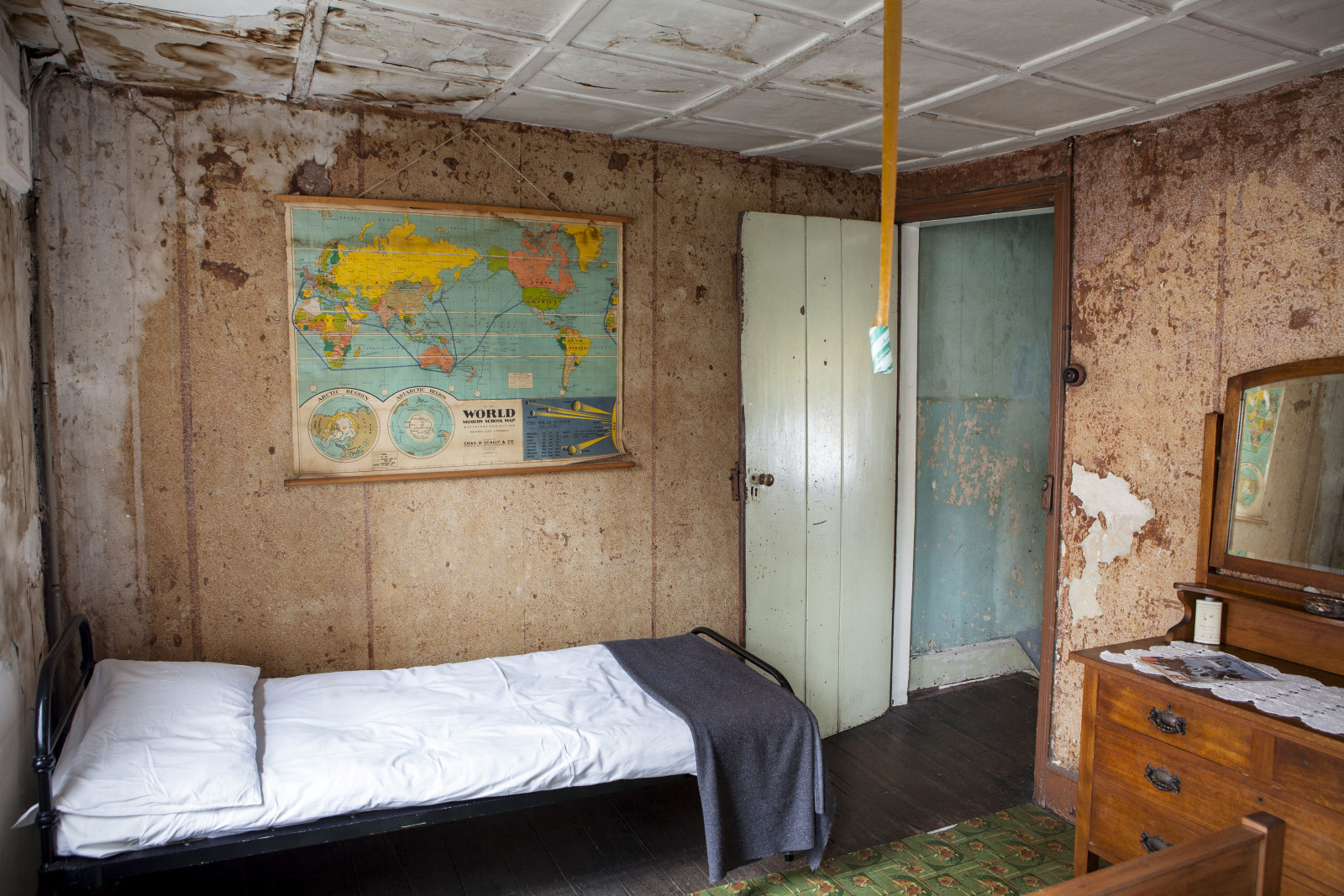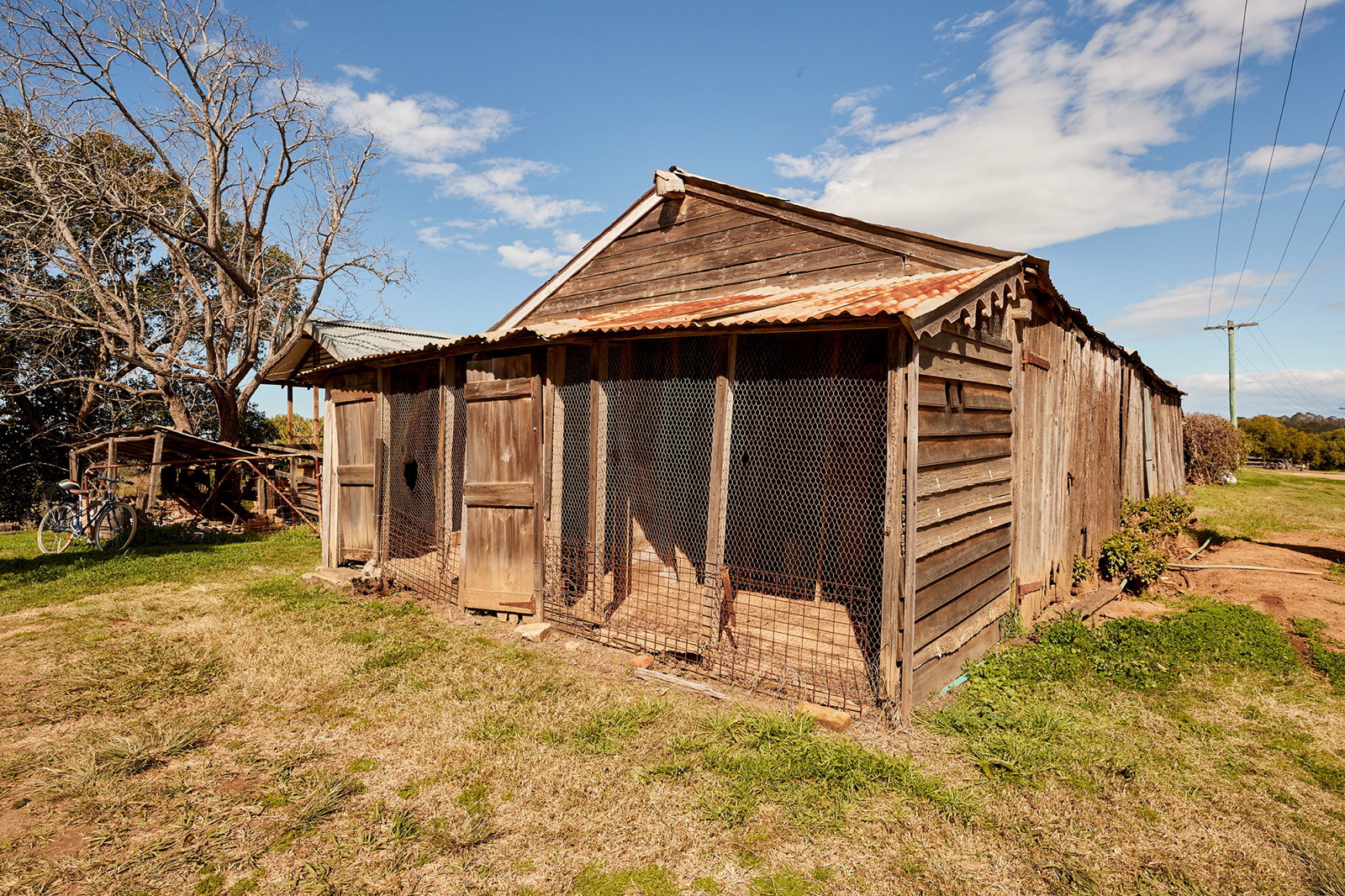Unloved modern
A meticulously executed conservation and revitalisation project reveals the potential of the much-maligned Nissen hut.
In 2008, the Museums of History NSW bought a dilapidated 1953 Nissen hut at 4 Somerset Street in Belmont North, Greater Newcastle, through our Endangered Houses Fund, a conservation program that identifies significant ‘at risk’ properties and saves them from demolition or unsympathetic development. Now nearing completion, the renewal of the Nissen hut offers lessons in recycling and downsizing.
A portable design
The Nissen hut was designed in 1916 by Major Peter Nissen, an engineer serving with the British Royal Engineers in World War I. The semi-cylindrical steel-framed hut, clad with corrugated iron and usually with timber infill at both ends, was prefabricated in different sizes, typically either 16 feet (4.8 metres) or 24 feet (7.3 metres) wide, with many variations in length. Economical, portable and quickly assembled, Nissen huts were mass-produced in both world wars, and mainly used as accommodation for defence forces, storage, and field hospitals and mess halls.
Following World War II, surplus Nissen huts were sold by the federal government to state and local authorities and were used for temporary housing as well as workshops, farm buildings, storage sheds, and even churches.
Migrant accommodation
The Nissen hut at 4 Somerset Street is one of only 23 remaining of the group of 50 that were built in Belmont North in 1953 as the Decentralised Migrant Hostel Belmont No 1. Also known as ‘Commonwealth Cottages’, they were referred to by locals as ‘round houses’, and the subdivision was sometimes disparagingly called ‘Pommy Town’ because of the houses’ use as migrant accommodation.
Although many of the Nissen huts at Belmont North have been demolished to make way for newer houses or remodelled, the group is thought by researchers to be the most intact in NSW. In spite of this significance, the Nissen huts at Belmont North are not admired in the wider community, and attempts to list the group on the NSW State Heritage Register were resisted. During community consultation in 2009, one local said: ‘It’s very nice for us to sit back and say “Aren’t they quaint? Aren’t they interesting?” [But] they’re not good living accommodation’. A former resident stated:
It was very uncomfortable at the start. Hot in summer, freezing cold in winter. Leaked like a sieve.
Another said: ‘They were never meant to be permanent housing. So let’s just document their history and move on’. However, Helen Smith, another former Nissen hut resident, said: ‘We were very happy here. They may not look like much from the outside, but on the inside I thought the huts were beautiful, really comfortable’.
Conservation and revitalisation
Without heritage protection, the Nissen huts in Belmont North are at ongoing risk of being demolished. By acquiring the property at 4 Somerset Street, SLM believed there was an opportunity to show how these modest little shacks could be sensitively adapted and modernised.
In 2017 we revised the objectives for the renewal project. We adopted a conservation approach aimed at retaining the form of the building on its site, retaining and conserving as much original fabric as possible, and using new materials sympathetic to the original – such as sheet-metal products, plywood, lightweight prefabricated steel framing – while modernising and updating the building to meet current code standards and to provide more comfort and flexibility inside. As only the main shell had survived, leaving an elegant clear-span barrel-vaulted interior space, we could see the potential for an informal open-plan configuration suited to contemporary living. With a floor area of only 11 metres x 7 metres, the creation of additional living space was necessary, and we started to think about how this could be achieved without diminishing the integrity of the original structure. SLM’s Heritage Team came up with the idea of adding a detached corrugated-iron-clad pavilion to the back of the block, joined to the Nissen hut by a glazed breezeway.
The emphasis was to be on space, comfort, daylight and ventilation, with raised timber decks joining the house to the surrounding garden for informality. Our main challenges would be achieving better thermal performance through the selection of materials in the very thin sandwich between the roof sheeting and the internal linings, natural ventilation and the introduction of modern amenities, including a great kitchen, bathroom and services.
The curved form of the roof to the new extension was inspired by the shape of corrugated-iron water tanks, and the selection of materials differed deliberately from those of the original building. A new development application submission and consultation with Lake Macquarie Council resolved planning and heritage issues, eventually resulting in development consent in early 2018.
Old and new
When we commenced building work in early 2021 and were able to remove the external claddings to examine the structure, we discovered that the sheet-metal roof and original weatherboard sidings were so badly deteriorated they would have to be completely replaced with new material. We also discovered how structurally flimsy the Nissen huts were, consistent with their original temporary nature. A structural engineer sympathetic to our conservation goals helped us to stiffen and strengthen the steel frame with new welded-on cleats, extra timber framing and bolted rigid fixings in place of wire ties and hangers, to make it structurally sound.
The physical separation between the old and new has created a delightful new space in the house, with floor-to-ceiling glazing washing the interior with light. New defining materials used in each area continue the prefabricated, industrial aesthetic, reinterpreted for contemporary use and easy maintenance. We were able to re-use enough of the original external weatherboard cladding to rebuild the end wall, which has been left unpainted to reveal the patina of many layers of paint and weather.
One of the delights of the Nissen hut refurbishment has been working with a builder dedicated to achieving a beautiful result, who took his time to work through the many challenges the building has presented; and also with the consultant architects who joined us on the journey at construction certificate stage.
Owing to COVID lockdowns and ongoing supply-chain issues, the refurbishment of 4 Somerset Road was slightly delayed, but the property will soon be on the market for a new owner – who knows, it could be you!
Related
Browse all
A House In The Making
After 162 years of being continuously occupied 62 Gloucester Street was opened to the public for the first time in 2006

Conservation
A herculean task: clearing the woolshed
The first stage of a major conservation project at Rouse Hill Estate involved removing thousands of objects accumulated over 150 years of the property’s occupation
Published on
